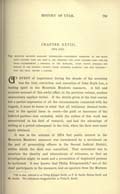
[p. 781]
CHAPTER XXVIII.
1874-1875.
THE MOUNTAIN MEADOWS MASSACRE INVESTIGATED—INDICTMENTS PRESENTED BY THE GRAND—JURY COLONEL DAME AND JOHN D. LEE ARRESTED—THE BATES CONTEMPT CASE—THE LEE TRIAL—KLINGENSMITH, A PRINCIPAL IN THE MASSACRE, TURNS STATE'S EVIDENCE—HIS VERSION OF THE TRAGEDY—TWENTY OTHER WITNESSES EXAMINED—THE JURY DISAGREE—WHY THE TRIAL PROVED A FAILURE.
AN EVENT of importance during the decade of the seventies was the trial, conviction and execution of John Doyle Lee, a leading spirit in the Mountain Meadows massacre. A full and accurate account of this awful affair, in the previous volume, renders unnecessary another recital. If the details given at the trial convey but a partial impression of all the circumstances connected with the tragedy, it must be borne in mind that all testimony deemed irrelevant to the special issue in court—the guilt or innocence of the indicted parties—was excluded, while the author of this work was unrestricted in his field of research, and had the advantage of writing at a period subsequent to the trial, when the facts were more easily obtained.
It was in the autumn of 1874 that public interest in the Mountain Meadows massacre was reawakened by a movement on the part of prosecuting officers in the Second Judicial District, within which the deed was committed. That movement was to ascertain the identity and whereabouts of witnesses, so that an investigation might be made and a prosecution of implicated persons be instituted. It was known that Philip Klingensmith,* one of the chief participants in the massacre, and an apostate from the Mormon
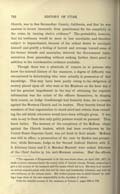
[p. 782]
Church, was in San Bernardino County, California, and that he was anxious to secure immunity from punishment for his complicity in the crime, by turning state's evidence.* The probability, however, that his testimony would be more or less unreliable, and therefore subject to impeachment, because of his ardent desire to exculpate himself and gratify a feeling of hatred and revenge toward some of his former friends and associates, deterred the Government representatives from proceeding without seeking further direct proof in addition to the corroborative evidence available.
Though there was a plenitude of rumors as to persons who knew the internal history of the massacre, a degree of difficulty was encountered in determining who were actually in possession of that knowledge. This may have been partly owing to the obligation of secrecy placed upon all who were at the Meadows on the fatal day;† but the greatest impediment in the way of obtaining the requisite information was the action of the officers themselves, in shaping their course, as Judge Cradlebaugh had formerly done, for a crusade against the Mormon Church and its leaders. They thereby forced the members of that organization to stand aloof and refrain from extending the aid which otherwise would have been willingly given. It was vain to say to them that only guilty persons would be pursued. They knew better. The memory of the conspiracy of the McKean clique against the Church leaders, which had been overthrown by the United States Supreme Court, was yet fresh in their minds. McKean was still in office; a prosecution of the case by Baskin was prospective; while Boreman, Judge in the Second Judicial District, with U. S. Attorney Carey and U. S. Marshal Maxwell were ardent followers of the Chief Justice in his anti-Mormon mission. Had the officers
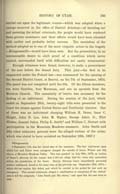
[p. 783]
started out upon the legitimate course which was adopted when a change occurred in the office of District Attorney of ferreting out and pursuing the actual criminals, the people would have rendered them greater assistance, and their efforts would have been attended with earlier and probably better success. The unwisdom of the method adopted as to one of the most culpable actors in the tragedy—Klingensmith—would have been seen. But the prosecution, in an unreasonable desire to elicit proof of a condition which never existed, surrounded itself with difficulties not easily surmounted.
Enough witnesses were found, however, to make a presentment of the case before the Grand Jury. This jury—the first to be empaneled under the Poland law—was summoned for the opening of the Second District Court, at Beaver, on the 7th of September, 1874. The panel was not completed until the 9th. Of the fifteen members, ten were Gentiles, four Mormons, and one an apostate from the Mormon Church. The unanimity of twelve was necessary for the finding of an indictment. During the session of the jury, which ended on September 25th, twenty-eight bills were presented to the Court for crimes against United States and Territorial statutes'. One of these was an indictment charging William H. Dame, Isaac C. Haight, John D. Lee, John M. Higbee, George Adair, Jr., Eliot Wilden, Samuel Jukes, Philip K. Smith* and William C. Stewart with participation in the Mountain Meadows massacre. John Smith and fifty other unknown persons were the alleged victims of the crime, which was stated to have occurred on September 16th, 1857.†
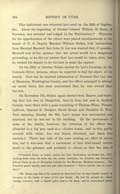
[p. 784]
This indictment was returned into court on the 24th of September. About the beginning of October Colonel William H. Dame, of Parowan, was arrested and lodged in the Penitentiary.* Warrants for the apprehension of the others were placed simultaneously in the hands of U. S. Deputy Marshal William Stokes, with instructions from Marshal Maxwell that John D. Lee was wanted first, if possible. Maxwell was of the opinion that the arrest would be a dangerous proceeding, as he did not believe that Lee would be taken alive; but he wished his deputy to do his best to make the capture.
On the 28th of October Stokes started for Lee's Crossing, on the Colorado River, Arizona, where he expected to find the object of his search. Next day he received information at Parowan that Lee was at Harmony, Washington County, and the officer arranged to attempt an arrest there, but soon ascertained that he was several days too late.
On November 7th, Stokes again started from Beaver, and learning that Lee was at Panguitch, then in Iron, but now in Garfield County, went there with a posse consisting of Thomas Winn, Thomas LaFevre, Samuel G. Rodgers, David Evans and Franklin R. Fish. Next morning, Sunday the 8th, Lee's house was surrounded and searched, but he was not in the building. By the movements of some of the family, however, the attention of the officer was attracted to a log pen, used as a chicken house, and in this, partly covered with straw, Lee was found, disarmed, and taken into custody.† There was talk of his sons making an effort to rescue him, but it was seen that a movement of that kind meant certain death to the prisoner, and probably to others, so that the idea, if
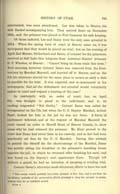
[p. 785]
entertained, was soon abandoned. Lee was taken to Beaver, his wife Rachel accompanying him. They arrived there on November 10th, and the prisoner was placed in Fort Cameron for safe keeping.
Of those indicted, Lee and Dame were the only ones arrested in 1874. When the spring term of court at Beaver came on, it was anticipated that they would be placed on trial; but on the evening of April 2nd Messrs. Sutherland and Bates, of counsel for the prisoners, received at Salt Lake this telegram from Assistant District Attorney D. P. Whedon, at Beaver: "Cannot bring on those trials this term." Next morning, however, Colonel Dame was removed from the Penitentiary by Marshal Maxwell, and hurried off to Beaver, and on the 5th his attorneys started for the same place to secure as early a date as possible for the trial. It was expected, and so announced in the newspapers, that all the defendants not arrested would voluntarily appear in court and request a hearing of the case.*
In conformity with an order of court, Lee, on April 6th, was brought to plead to the indictment, and to its reading responded "Not Guilty." Colonel Dame was called for arraignment on the 7th, but when the U. S. Deputy Marshal, Arthur Pratt, looked for him in the jail he was not there. A flurry of excitement followed, and at the request of Marshal Maxwell the court issued an order to Sheriff Hunt, of Beaver County, to show cause why he had released the prisoner. Mr. Hunt proved to the court that Dame had never been in his custody, and in fact had been practically set free by the U. S. Marshal. During this attempt to punish the Sheriff for the shortcomings of the Marshal, Dame was quietly eating his breakfast at the prisoner's boarding house opposite the jail, to which he returned after finishing his meal, and was found on the deputy's next appearance there. Though left without a guard, he had no intention of escaping or evading trial.
Colonel Dame's attorneys made strenuous efforts to have his case
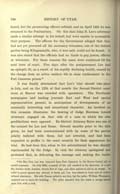
[p. 786]
heard, but the prosecuting officers refused, and on April 14th he was returned to the Penitentiary. On this date John D. Lee's attorneys made a similar attempt in his behalf, but were unable to accomplish their purpose. The officers for the Government alleged that they had not yet procured all the necessary witnesses, one of the desired parties being Klingensmith, who, it was said, could not be found. It was also stated that the officials had no funds to pay jurors, officers or witnesses. For these reasons the cases were continued till the next term of court. Five days after the postponement Lee had an epileptic fit, as a result of his rapidly declining health, caused by the change from an active outdoor life to close confinement in the Fort Cameron prison.*
It was finally determined that Lee's trial should take place in July, and on the 12th of that month the Second District court room at Beaver was crowded with spectators. The Territorial newspapers 'and leading journals East and West had special representatives present, in anticipation of developments of an unusually interesting and sensational character. An incident on this occasion illustrates the bearing of Judge Boreman toward attorneys engaged on that side of a case to which his own predilections were opposed. Ex-District Attorney Bates was one of the counsel for Lee and Dame. Several months prior to the date given, he had been communicated with by some of the parties jointly indicted with them, but not arrested, and had been requested to proffer to the court security for their appearance for trial. He had done this, when to his astonishment he was sharply reprimanded by the Judge. In vain the attorney apologized and protested that, in delivering the message and making the tender
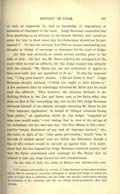
[p. 787]
of bail, as requested, he had no knowledge of impropriety or intention of disrespect to the court. Judge Boreman suspended him from practicing as an attorney in the Second District, and issued an order for him to show cause why the disbarment should not be permanent.* To this the attorney had filed an answer disclaiming any thought or design of contempt or disrespect for the court or Judge.
All this had occurred, as stated, several months prior to the 12th of July. On that day Mr. Bates solicited the indulgence of the court while he read an affidavit, but the Judge stopped him abruptly with the remark, "Mr. Bates, you are not authorized to appear in this court until you are permitted to do so." To this the response was, "I beg your honor's pardon. I did not think of that." Judge Boreman sharply rejoined, "I think you ought to have known it." A few moments later he relentingly informed Mr. Bates that he could read the affidavit. This, however, the attorney declined to do. Nothing further in the Lee and Dame case, or the Bates affair, was done on that or the succeeding day, but on the 14th Judge Boreman delivered himself of an address, strongly censuring Mr. Bates for his "very improper application" in behalf of "alleged criminals fleeing from justice," an application which he (the Judge) "supposed no sane man would make,"—but stating that in view of the old age of the defendant, the fact that this was "his first offense in this court," and his "sworn disclaimer of any and all improper motives," etc., the court, in spite of the "very great provocation," would "lean to the side of mildest mercy" and not disbar the defendant, though a fine of fifty dollars would be entered up against him. It is understood that the fine imposed by Judge Boreman remained unpaid, and that Mr. Bates entertained such contempt for His Honor that he refused to take any steps toward his own reinstatement.
On the 14th of July the town of Beaver was thrown into com-
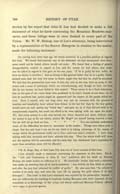
[p. 788]
motion by the report that John D. Lee had decided to make a full statement of what he knew concerning the Mountain Meadows massacre, and these tidings were at once flashed to every part of the Union. Mr. W. W. Bishop, one of Lee's attorneys, being interviewed by a representative of the Beaver Enterprise in relation to the matter, made the following statement:
On coming here some days ago we found ourselves in a peculiar position as regards this trial. We found that scarcely any of the witnesses we had summoned were here; some could not be found, others would not come. We found that a feeling of general disapprobation existed in regard to Lee and the course he had taken; that everyone we asked in regard to him gave us the one reply, 'If he is guilty let him suffer, we have no desire to interfere;' that so strong is the general belief that he is a guilty, bloodstained man, that but very few seem to desire aught else but that he shall be punished. We find that the prosecution have now in this city and on the way here an array of witnesses and a mass of testimony which are overwhelming, and, though we have not been idle by any means, we have failed in this respect. There seems to be a fixed determination on the part of all—even those who professed to be Lee's friends at one time to let him be sacrificed that justice might be appeased and the clamor of the people stilled forever. Even I, myself, who not long since was met by everyone with the greatest of courtesy and hospitality, have almost been frozen in the last few days by the way parties would meet me and merely say "Good day," and pass on, as if they did not wish to be conspicuously impolite, but could not afford to be seen talking with me upon the street. We find every avenue to a fair trial barred, our client deserted and alone, without even the means to pay us for our labors, neither Mr. Hoge* nor myself having received a cent; but we will not go back on him. * * * You can probably understand some of the difficulties we have to encounter in the matter. Things have taken such a shape that the only hope I can see for my client is in taking advantage of the means of escape which the government holds out to him and turn state's evidence. I have been talking with him seriously and have advised this step. Then the whole truth will come out, the mystery will be unraveled, and the stain that has blackened Lee's reputation for more than seventeen years will be effaced.†
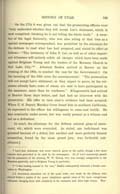
[p. 789]
On the 17th it was given out that the prosecuting officers were "very undecided whether they will accept Lee's statement, which is now completed, thinking he is not telling the whole truth." A member of the legal fraternity, who was also acting at that time as a special newspaper correspondent, was permitted by the attorneys for the defense to read what Lee had prepared, and stated its effect as follows: "The testimony of John D. Lee, as well as of other important witnesses will entirely refute all charges which have been made against Brigham Young and the leaders of the Mormon Church in Salt Lake City."* Attorney Baskin arrived at Beaver on the evening of the 18th, to conduct the case for the Government.† On the morning of the 19th came the announcement: "The prosecution will not accept Lee's statement, as they expect to prove, by the witnesses already here, some of whom are said to have participated in the massacre, more than he confesses." Klingensmith had arrived at Beaver three days before, and had had an interview with the prosecutor. His offer to turn state's evidence had been accepted. When U. S. Deputy Marshal Cross found him in southern California, he expressed to the officer his willingness to come and testify. He was nominally under arrest, but was really present as a witness and not as a defendant.
In court, the attorneys for the defense entered pleas of abatement, etc., which were overruled. As stated, one indictment was quashed because of a defect, but another and more perfectly framed accusation, found by the same grand jury, was forthwith substituted.‡
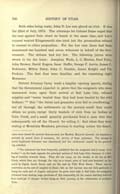
[p. 790]
Both sides being ready, John D. Lee was placed on trial. It was the 22nd of July, 1875. The attorneys for Colonel Dame urged that the case against their client be heard at the same time, and Lee's counsel wanted Klingensmith also tried, but the prosecution refused to consent to either proposition. For the Lee case there had been summoned one hundred and seven witnesses in behalf of the Government. The defense had but few. The following jurors were sworn to try the issue: Josephus Wade, L. C. Hiester, Paul Price, John Brewer, David Rogers, Isaac Duffin, George F. Jarvis, James C. Robinson, Milton Daley, John C. Dunkin, James Knight and Ute Perkins. The first four were Gentiles, and the remaining eight Mormons.
District Attorney Carey made a lengthy opening speech, stating that the Government expected to prove that the emigrants who were massacred were, upon their arrival at Salt Lake City, refused supplies and "worse treated than they had been treated by the wild Indians; "* that "the barns and granaries were full to overflowing," but all through the settlements on the journey south they could obtain no grain, except thirty bushels of corn from an Indian at Corn Creek, and a small quantity purchased from a man who was subsequently cut off the Church for selling it; that when they were resting at Mountain Meadows, previous to starting across the desert,
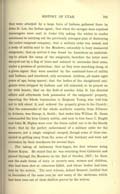
[p. 791]
they were attacked by a large force of Indians, gathered there by John D. Lee, the Indian agent; that when the savages were repulsed messengers were sent to Cedar City asking the whites to render assistance in carrying out the previously arranged plan of destroying the entire emigrant company; that a military order was issued, and a body of militia sent to the Meadows, ostensibly to bury massacred emigrants; that on arrival it was found too hazardous an undertaking to attack the camp of the emigrants, therefore the latter were decoyed out by a flag of truce and induced to surrender their arms, under a promise of protection; that as they were marching along, at a given signal they were assailed by the combined force of militia and Indians, and murdered, only seventeen children, all under eight years of age, being spared; that the bodies of the slaughtered emigrants were stripped by Indians and left unburied, to be preyed on by wild beasts; that on the field of murder John D. Lee directed affairs and afterwards took possession of the emigrants' property, reporting the whole transaction to Brigham Young, who told him not to talk about it, and ordered the property given to the Church; that the commander of the whole southern country, from Fillmore to Arizona, was George A. Smith; that under him William H. Dame commanded the Iron County militia, and next to him Isaac C. Haight and John M. Higbee were over the forces called out to do the bloody work; that by the perfect enforcement of a military order for the massacre, not a single emigrant escaped, though some of them succeeded in getting away from the scene of the butchery and were not overtaken by their murderers for several days.
The taking of testimony then began, the first witness being Robert Keyes. He stated that he was returning from California and passed through the Meadows on the 2nd of October, 1857; he there saw the nude forms of sixty or seventy men, women and children, who had been shot or otherwise killed, and whose bodies had been torn by the wolves. The next witness, Ashael Bennett, testified that in December of the same year he saw many of the skeletons, which had been torn out of their shallow graves by the wolves.
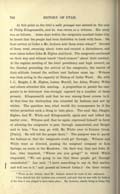
[p. 792]
At this point in the trial a nolle prosegui was entered in the case of Philip Klingensmith, and he was sworn as a witness. His story was as follows. Some days before the emigrants reached Cedar City he heard that the people had been forbidden to trade with them. On their arrival at Cedar a Mr. Jackson sold them some wheat.* Several of them went swearing about town and created a disturbance, and were taken before John M. Higbee and fined. The emigrants continued on their way and witness heard "hard rumors" about their conduct. At the regular meeting of the local presidency and high council, on the Sunday preceding the arrival of the emigrants, the matter of their attitude toward the settlers and Indians came up. Witness was then acting in the capacity of Bishop of Cedar Ward. He, with I. C. Haight, J. M. Higbee, Laban Morrill, Ira Allen, Wesley Willis and others attended this meeting. A proposition to permit the emigrants to be destroyed was strongly opposed by a number of those present. Klingensmith said that he was among those averse to it. At that time the destruction was intended by Indians, and not by whites. The question was, what would the consequence be if the whites permitted such a thing to take place. The next day, Haight, Higbee, Joel W. White and Klingensmith again met and talked the matter over. Witness said that he again expressed himself in favor of allowing the emigrants to pass through unmolested, and Haight said to him, "You may go with Mr. White over to Painter Creek, [Pinto]. He will tell the people there." The purpose was to pacify the Indians so that the emigrants could get through. Witness and White went as directed, passing the emigrant company at Iron Springs, en route to the Meadows. On their way they met John D. Lee, who inquired, "Where are you going?" to which White responded, "We are going to see that these people get through unmolested." Lee said, "I have something to say in that matter, and will see to it," and passed on toward Cedar.† On their return
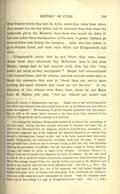
[p. 793]
from Painter Creek they met Ira Allen, about four miles from where they passed Lee the day before, and he informed them that when the emigrants got to the Meadows their doom was sealed, for John D.Lee had orders from headquarters at Parowan to gather Indians, go around below and destroy the company. Allen also had orders to go to Painter Creek and undo what White and Klingensmith had done.
Klingensmith stated that he and White then went home. About three days afterwards Dan McFarlane came to him from Haight, saying that he had received word from Lee that "they hadn't got along as they anticipated."* Haight had communicated with Colonel Dame, said the witness, and had received orders that, to finish the massacre, they were to "decoy them out, and to spare nothing but small children that could not tell the tale." At the direction of Lee, witness went down town, where he met Major John M. Higbee, who said, "You are ordered out, armed and

[p. 794]
equipped as the law directs, to go to the Mountain Meadows." He, with a number of others, obeyed and went as militia, arriving at Hamblin's ranch, three miles from the eimgrants' camp, in the night. There was militia from Washington County, as well as Iron County, there under orders. The men began to find out that all the emigrants were not killed, as had been represented. Then there was a consultation between Lee, Higbee, Hopkins, Allen, Wiley, Klingensmith and a few others who were called aside by Lee, about the instructions that had come through Higbee to Lee, from Colonel Dame at Parowan.* Lee stated that tie emigrants were strongly fortified, and Major Higbee replied that they must be got out in any way possible.† Everything was given into Lee's hands to carry out; so he formed the militia, numbering forty or fifty men, into a hollow square, and addressed them on the work that they were expected to perform. ‡ There was some murmuring among the men, who asked among themselves what they could do, and the conclusion was that
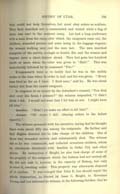
[p. 795]
they could not help themselves, but must obey orders as soldiers. They then marched out, as commanded, and waited while a flag of truce was sent to the emigrant camp. Lee had a long conference with a man from the camp after which the emigrants came out, the children, wounded persons and arms being in the baggage wagons; the women walking next, and the men last. The men marched alongside of the militia, in single or double file, and the women and wagons were a short distnce ahead. They had gone two hundred yards or more when the order was given to "Halt!" This was immediately followed by the command "Fire!"
Klingensmith went on to testify that he was in the militia ranks at the time when the order to halt and fire was given. "Every man fired as far as I know. I fired once," said he. He was about twenty feet from the nearet emigrant.
In response to an inqiry by the defendant's counsel, "You first shot over his head, I presume?" the witness responded, "I didn't think I did. I would not swear that I hit him or not. I might have hit him."
Question: "Didn't you make an effort to hit him?"
Answer: "Of coure I did; obeying orders to the fullest capacity."
The witness proceeded with his narrative, saying that he thought there were about fifty men among the emigrants. He further said that Higbee directed him to take charge of the children. One of these was wounded severely, and subsequently died. The witness did as he was commanded, and collected seventeen children, whom he afterwards distributed with families in Cedar City and other places. By instruction of Haight, he also took charge of some of the property of the emigrants which the Indians had not carried off. He did not take it, however, in the capacity of Bishop, but only to store it, awaiting orders. This property was afterwards disposed of at auction. It was aranged that John D. Lee should report the whole transaction, as directed by Isaac C. Haight, to Governor
Young, and Lee informed the witness, in the following October, that he

[p. 796]
had done so.* After this, the witness, with John D. Lee and Charles Hopkins, had called upon the Governor [Brigham Young] and the latter directed Lee, as Indian agent and interpreter, to take charge of the property left by the emigrants. Nothing was said at that time of the circumstances of the massacre; as the Governor remarked that he did not wish to hear it talked of. At the time of the massacre "the hills were full of Indians" who took part in the butchery.
In response to a question by Mr. Baskin: "Do you know whether any of those orders that led to that massacre emanated from George A. Smith, and if so state what it was?" Klingensmith said: "No, sir; not that I know of."
The witness admitted that he received and kept a span of mules and two wagons which had belonged to the emigrants. He had resigned the office of Bishop of Cedar Ward in 1858 or 1859, and moved away shortly afterward. About 1870 he heard that he had been cut off from the Mormon Church. Before he became a resident of Nevada he had only stated the facts regarding the massacre to one man—Charles Dalton, Lee's son-in-law. He had not conversed on the subject with Jacob Hamblin, nor did he, when Hamblin said that he would rather Buchanan should hear of all the men in Utah being killed than give his consent to the killing of women and children, reply, "If you break out that way around the mouth, we will have to take care of you." During the consultations at the Meadows he had not raised his voice against the proposed slaughter because he "had no authority to do so." He denied, however, having advocated the commission of the deed.
Such was the statement of the witness Klingensmith. In it the inconsistency which usually marks efforts of criminals to shield themselves at the expense of others is glaringly manifest. Here was
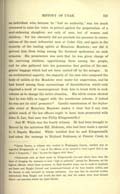
[p. 797]
an individual who, because he "had no authority," was too much overawed to raise his voice in protest against the perpetration of a soul-sickening slaughter, not only of men, but of women and children. Yet his obscurity did not preclude his presence in convocations of the most influential men at Cedar City, and again in the councils of the leading spirits at Mountain Meadows; nor did it prevent him from being among the foremost spokesmen on each occasion. His prominence was such that he was given charge of the surviving children, apportioning them among the people, and he also gathered into his possession that portion of the emigrants' baggage which had not been carried off by the savages. In an ecclesiastical capacity, the majority of the men who composed the body of militia at the Meadows were under his supervision, and he had heard among them murmurings of dissatisfaction which only required a word of encouragement from him to break forth in such volume as to change the entire situation. His whole course showed that he was fully en rapport with the murderous scheme, if indeed he was not its chief promoter.* Careful examination of the deplorable event at Mountain Meadows makes it clear that if any man within reach of the law officers ought to have been prosecuted with John D. Lee, that man was Philip Klingensmith.†
Joel W. White was the fourth witness. He had been brought to Beaver by the notorious Bill Hickman, who had been made a special U. S. Deputy Marshal. White testified that he and Klingensmith had taken the message to Richard Robinson, at Painter Creek, to
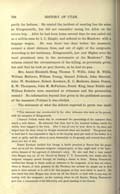
[p. 798]
pacify the Indians. He related the incident of meeting Lee the same as Klingensmith, but did not remember seeing Ira Allen on the return trip. After he had been home several days he was called out as a militia-man by I. C. Haight, and ordered to the Meadows with a baggage wagon. He was there two days before the massacre, camped a short distance from, and out of sight of the emigrants. According to his testimony, Klingensmith, Lee and Higbee were the most prominent men in the movements at the Meadows.* The witness related the circumstances of the killing, as previously given, but said that he took no part therein, as he had no gun.
Mrs. Annie Elizabeth Hoag, Thomas T. Willis, John H. Willis, William Mathews, William Young, Samuel Pollock, John Sherratt, John W. Bradshaw, Robert Kershaw, E. C. Mathews, James Pearce, E. W. Thompson, John M. McFarlane, Frank King, Isaac Riddle and William Roberts were examined as witnesses and the prosecution rested.† No information beyond that given in the published account of the massacre (Volume I) was elicited.
The statement of what the defense expected to prove was made
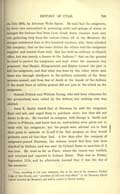
[p. 799]
on July 29th, by Attorney Wells Spicer. He said that the emigrants, by their own misconduct in poisoning cattle and springs of water, so enraged the Indians that from Corn Creek down runners were sent out, gathering help from the various tribes, till at the Meadows the savages numbered four or five hundred warriors, who there attacked the company; that on the route thither the whites sold the emigrants supplies and treated them well; that Lee held no military or Church office, but was merely a farmer to the Indians;* that on the ground he tried to protect the emigrants, and wept when the massacre was proposed; that Haight, Klingensmith and Higbee formed the plot to kill the emigrants, and that what was done by the other white men there was through obedience to the military authority of the three persons named, and from fear of death at the hands of the Indians if the small force of militia present did not join in the attack on the emigrants.
Samuel Pollock and William Young, who had been witnesses for the prosecution, were called by the defense, but nothing new was elicited.
Jesse N. Smith stated that at Parowan he sold the emigrants flour and salt, and urged them to purchase more, but they did not desire to do so. He traveled in company with George A. Smith and others to Fillmore, and knew that no instructions were given not to trade with the emigrants; but the people were advised not to feed their grain to animals or to sell it for that purpose, as they would probably need all that they had. A few days after the company of emigrants passed Parowan, the witness heard that they had been attacked by Indians, and was sent by Colonel Dame to ascertain if it was true. He went as far as Pinto, where the rumor was verified, and returned and reported to Colonel Dame. This was on Friday, September llth, and he afterwards learned that it was the day of the massacre.
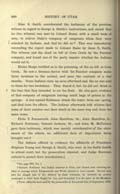
[p. 800]
Silas S. Smith corroborated the testimony of the previous witness in regard to George A. Smith's instructions, and stated that he (the witness) was sent by Colonel Dame; with a small body of men, to relieve Duke's company of emigrants when they were attacked by Indians, and that he did so.* This was immediately succeeding the report made to Colonel Dame by Jesse N. Smith. The witness saw the dead ox left at Corn Creek by the Fancher company, and heard one of the party inquire whether the Indians would eat it.
Elisha Hoops testified as to the poisoning of the ox left at Corn Creek. He saw a German doctor with the Fancher company make three incisions in the animal, and pour the contents of a vial therein. Some Indians came up soon afterward and the ox was sold to them for two buckskins. They flayed it, but he did not think at the time that they intended to eat the flesh. He also gave evidence of that company of emigrants leaving small bags of poison in the springs. A boy named Robinson drank the water from one spring, and died from the effects. The Indians afterwards told witness that some of their number met their death in the same way and from the same cause.
Philo T. Farnsworth, John Hamilton, Sr., John Hamilton, Jr., Richard Robinson, Samuel Jackson, Sr., and John M. McFarlane gave their testimony, which was merely corroborative of the statements of the others, no additional facts of importance being brought out.†
The defense offered in evidence the affidavits of Presidents Brigham Young and George A. Smith, who were in too feeble health to attend court, but the prosecution objected, and Judge Boreman refused to permit their introduction.‡
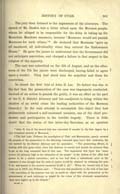
[p. 801]
The jury then listened to the arguments of the attorneys. The speech of Mr. Baskin was a bitter attack upon the Mormon people, whom he alleged to be responsible for the delay in taking up the Mountain Meadows massacre, because "Mormons would not punish Mormons for such crimes."* He declared that Mormons "gave up all manhood, all individuality when they entered the Endowment House." He gave the jurors to understand that the Government did not anticipate conviction, and charged a failure in that respect to the religion of the majority.
The case was submitted on the 5th of August, and on the afternoon of the 7th the jurors were discharged, having failed to agree upon a verdict. They had stood nine for acquittal and three for conviction.
So closed the first trial of John D. Lee. Its failure was due to the fact that the prosecution of the case was improperly conducted. Instead of an action to punish the guilty, it was an effort on the part of the U. S. District Attorney and his coadjutors to bring within the shadow of an awful crime the leading authorities of the Mormon Church.† In the vain attempt to accomplish this object they had deliberately released a self-confessed assassin, one of the chief promoters and participators in the terrible tragedy. There is little doubt that the status of this latter-day Barrabas, as an apostate
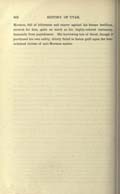
[p. 802]
Mormon, full of bitterness and rancor against his former brethren, secured, for him, quite as much as his highly-colored testimony, immunity from punishment. His harrowing tale of blood, though it* purchased his own safety, utterly failed to fasten guilt upon the foreordained victims of anti-Mormon malice.
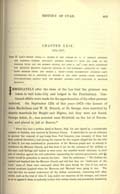
[p. 803]
CHAPTER XXIX.
1875-1877.
JOHN D. LEE'S SECOND TRIAL—A CHANGE IN THE OFFICES OF U. S. DISTRICT ATTORNEY AND MARSHAL—SUMNER HOWARD'S SENSIBLE SPEECH "I HAVE NOT COME TO TRY BRIGHAM YOUNG AND THE MORMON CHURCH, BUT JOHN D. LEE"—THE FACTS CONCERNING THE MOUNTAIN MEADOWS MASSACRE DETAILED BY EYE-WITNESSES—AFFIDAVITS OF PRESIDENTS BRIGHAM YOUNG AND GEORGE A. SMITH—OTHER DOCUMENTARY EVIDENCE LEE'S CONFESSIONS—HE IS CONVICTED OF MURDER IN THE FIRST DEGREE—JUDGE BOREMAN'S UNWARRANTABLE ASSAULT UPON THE MORMON LEADERS—LEE'S EXECUTION AT MOUNTAIN MEADOWS.
IMMEDIATELY after the close of the Lee trial the prisoner was taken to Salt Lake City and lodged in the Penitentiary. Continued efforts were made for the apprehension of the other persons indicted. On September 12th of this year—1875—the houses of John Macfarlane and W. H. Branch, at St. George, were searched by deputy marshals for Haight and Higbee, but they were not found. George Adair, Jr., was arrested near Richfield on the 1st of November, and placed in jail at Beaver.*
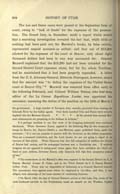
[p. 804]
The Lee and Dame cases were passed at the September term of court, owing to "lack of funds" for the expenses of the prosecution. The Grand Jury, in December, made a report which stated that a searching investigation revealed the fact that, while little or nothing had been paid out, the Marshal's books, by false entries, represented unpaid accounts as settled; and that out of $13,200 allowed for the expenses of the court at Beaver, only about eight thousand dollars had been in any way accounted for. General Maxwell explained that the $13,200 had not been intended for the Second District Court expenses alone, but for the whole Territory, and he maintained that it had been properly expended. A letter from the U. S. Attorney-General, Edwards Pierrepont, however, stated that the amount was "to defray the expenses of the United States court at Beaver City." * Maxwell was removed from office early in the following February, and Colonel William Nelson, who had been editor of the La Crosse Republican Leader, was appointed his successor, assuming the duties of the position on the 15th of March.†
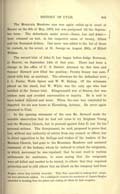
[p. 805]
The Mountain Meadows case was again called up in court at Beaver on the 8th of May, 1876, but was postponed till the September term. The defendants under arrest Dame, Lee and Adair were released on bail, in the respective sums of twenty, fifteen and ten thousand dollars. One more was added to the list of those in custody, by the arrest, at St. George on August 28th, of Elliott Wilden.
The second trial of John D. Lee began before Judge Boreman, at Beaver, on September 14th of that year. There had been a change in the office of U. S. District Attorney by this time and Sumner Howard now filled the position; Presley Denny was associated with him as assistant. The attorneys for the defendant were J. C. Foster, Wells Spicer and W. W. Bishop. Of the witnesses placed on the stand, Joel W. White was the only one who had testified at the former trial. Klingensmith was at Beaver, but was seldom seen and avoided conversation or inquiry. He is said to have looked dejected and worn. When the case was concluded he departed for his new home at Ehrenberg, Arizona. He never again returned to Utah.
In the opening statement of the case Mr. Howard made the sensible observation that he had not come to try Brigham Young and the Mormon Church, but to proceed against John D. Lee for his personal actions. The Government, he said, proposed to prove that Lee, without any authority or advice from any council or officer, but in direct opposition to the feelings and wishes of the leaders of the Mormon Church, had gone to the Mountain Meadows and assumed command of the Indians, whom he induced to attack the emigrants, in which movement he was repulsed; that he sent word to various settlements for assistance, to some saying that the emigrants were all killed and needed to be buried, to others that they required protection and to still others that an attack on the company had been
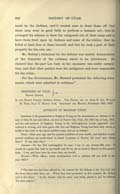
[p. 806]
made by the Indians, and it needed men to draw them off: that these men went in good faith to perform a humane act; that arranged the scheme to draw the emigrants out of their camp and have them fired upon by Indians and some of the whites; that killed at least four of them himself, and that he took a part of property for his own use.
Mr. Bishop's statement for the defense was mainly denunciat of the character of the evidence about to be introduced. He claimed that the part Lee took in the massacre was under compulsion, and that other parties were the instigators and were responsible for the crime.
For the Government, Mr. Howard presented the following documents, which were admitted in evidence.*
TERRITORY OF UTAH, SS BEAVER COUNTY,
IN THE SECOND JUDICIAL DISTRICT COURT. THE PEOPLE, ETC., VS. JOHN D. LEE, WILLIAM H. DAME. ISAAC C. HAIGHT et al, INDICTMENT FOR MURDER, SEPTEMBER 16th. 1857.
AFFIDAVIT OF BRIGHAM YOUNG.
Questions to be propounded to Brigham Young on his examination as witness in the case of John D. Lee and others, on trial at Beaver City, Utah, this 30th day of July, 1875, and the said answers of Brigham Young to the interrogatories hereto appended were reduced to writing, and were given after the said Brigham Young had been duly sworn to testify to the truth in the above entitled cause, and are as follows:
First.—State your age, and the present condition of your health, and whether in your present condition you could travel to attend in person at Beaver, the court now there? If not, state why?
Answer.—To the first interrogatory he says: I am in my seventy-fifth year. It would be a great risk, both to my health and life for me to travel to Beaver at this time. I am, and have been for some time, an invalid.
Second.—What offices, either ecclesiastical, civil or military, did you hold in year 1857?
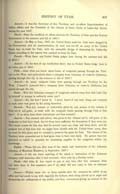
[p. 807]
Answer.—I was the Governor of this Territory, and ex-officio Superintendent of Indian affairs, and the President of the Church of Jesus Christ of Latter-day Saints, during the year 1857.
Third.—State the condition of affairs between the Territory of Utah and the Federal Government in the summer and fall of 1857 ?
Answer.—In May or June, 1857, the United States mails for Utah were stopped by the Government, and all communication by mail was cut off; an army of the United States was en route for Utah, with the ostensible design of destroying the Latter-day Saints, according to the reports that reached us from the East.
Fourth.—Were there any United States judges here during the summer and fall of 1857?
Answer.—To the best of my recollection there was no United States Judge here in the latter part of 1857.
Fifth.—State what you know about trains of emigrants passing through the Territory to the West, and particularly about a company from Arkansas, en route for California, passing through this city in the summer or fall of 1857?
Answer.—As usual, emigrant trains were passing through our Territory for the West. I heard it rumored that a company from Arkansas, en route to California, had passed through the city.
Sixth.—Was this Arkansas company of emigrants ordered away from Salt Lake City by yourself or anyone in authority under you?
Answer.—No, not that I know of. I never heard of any such thing, and certainly no such order was given by the acting Governor.
Seventh.—Was any counsel or instruction given by any person to the citizens of Utah not to sell grain, or trade with the emigrant trains passing through Utah at that time? If so what were those instructions and that counsel?
Answer.—Yes, counsel and advice was given to the citizens not to sell grain to the emigrants to feed their stock, but let them have sufficient for themselves if they were out. The simple reason for this was that for several years our crops had been short, and the prospect was at that time that we might have trouble with the United States army, then en route for this place; and we wanted to preserve the grain for food. The citizens of the Territory were counseled not to feed grain even to their own stock. No person was ever punished or called in question for furnishing supplies to the emigrants, within my knowledge.
Eighth.—When did you first hear of the attack and destruction of the Arkansas company, at Mountain Meadows, in September, 1857?
Answer.—I did not learn anything of the attack or destruction of the Arkansas company until sometime after it had occurred, then only by a floating rumor.
Ninth.—Did John D. Lee report to you at any time after this massacre what had been done at that massacre, and if so what did you reply to him in reference thereto?
Answer.—Within some two or three months after the massacre he called at my office and had much to say with regard to the Indians, their being stirred up to anger and threatening the settlements of the whites, and then commenced giving an account of the
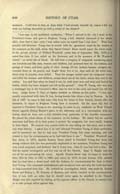
[p. 808]
massacre. I told him to stop, as from what I had already learned by rumor I did not wish my feelings harrowed up with a recital of the details.*
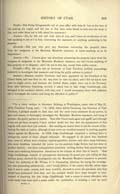
[p. 809]
Tenth:—Did Philip Klingensmith call at your office with John D. Lee at the time of Lee making his report, and did you at that time order Smith to turn over the stock to Lee, and order them not to talk about the massacre?
Answer.—No, he did not call with John D. Lee, and I have no recollection of his ever speaking to me or I to him concerning the massacre, or anything pertaining to the property.
Eleventh.—Did you ever give any directions concerning the property taken from the emigrants at the Mountain Meadows massacre, or know anything as to its disposition?
Answer.—No. I never gave any directions concerning the property taken from the company of emigrants at the Mountain Meadows massacre, nor did 1 know anything of that property or its disposal; and I do not to this day, except from public rumor.
Twelfth.—Why did you not, as Governor of Utah Territory, institute proceedings forthwith to investigate that massacre and bring the guilty authors to justice?
Answer.—Because another Governor had been appointed by the President of the United States, and was then on the way here to take my place, and I did not know how soon he might arrive, and because the United States judges were not in the Territory. Soon after Governor Cumming arrived, I asked him to take Judge Cradlebaugh, who belonged to the southern district, with him, and I would accompany them with sufficient aid to investigate the matter and bring the offenders to justice.*
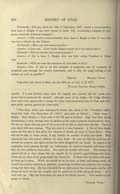
[p. 810]
Thirteenth.—Did you, about the 10th of September, 1857, receive a communication from Isaac C. Haight, or any other person of Cedar City, concerning a company of emigrants called the Arkansas company?
Answer.—I did receive a communication from Isaac C. Haight or John D. Lee, who was then a farmer for the Indians.
Fourteenth.—Have you that communication?
Answer.—I have not. I have made diligent search for it but cannot find it.
Fifteenth.—Did you answer that communication?
Answer.—I did, to Isaac C. Haight, who was then acting President at Cedar City.
Sixteenth.—Will you state the substance of your letter to him?
Answer.—Yes. It was to let this company of emigrants, and all companies of emigrants, pass through the country unmolested, and to allay the angry feelings of the Indians as much as possible.*
(Signed), BRIGHAM YOUNG.
Subscribed and sworn to before me this 30th day of July, A. D. 1875.
WILLIAM CLAYTON, Notary Public.
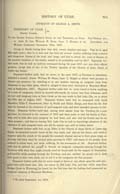
[p. 811]
AFFIDAVIT OF GEORGE A. SMITH
TERRITORY OF UTAH, ss. Beaver County,
IN THE SECOND JUDICIAL DISTRICT COURT OF THE TERRITORY OF UTAH. THE PEOPLE, ETC., vs. JOHN D. LEE, WILLIAM H. DAME, ISAAC C. HAIGHT, et al. INDICTMENT FOR MURDER COMMITTED SEPTEMBER 16. 1857.
George A. Smith having been first duly sworn, deposes and says: That he is aged fifty-eight years; that he is now and has been for several months suffering from a severe and dangerous illness of the head and lungs, and that to attend the court at Beaver, in the present condition of his health, would in all probability end his life.* Deponent further saith that he had no military command during the year 1857, nor any other official position, except that of one of the Twelve Apostles of the Church of Jesus Christ of Latter-day Saints.
Deponent further saith that he never, in the year 1857, at Parowan or elsewhere, attended a council where William H. Dame, Isaac C. Haight or others were present, to discuss any measures for attacking or in any manner injuring an emigrant train from Arkansas or any other place, which is alleged to have been destroyed at Mountain Meadows in September, 1857. Deponent further saith that he never heard or knew anything of a train of emigrants, which he learned afterwards, by rumor, was from Arkansas, until he met said emigrant train at Corn Creek on his way north to Salt Lake City, on or about the 25th day of August, 1857. Deponent further saith that he encamped with Jacob Hamblin, Philo T. Farnsworth, Silas S. Smith and Elisha Hoops, and there for the first time he learned of the existence of said emigrant train and their intended journey to California. Deponent further saith that, having been absent from the Territory for a year previous, he returned in the summer of 1857 and went south to visit his family at Parowan, and to look after some property he had there, and also visit his friends and for no other purpose; and that on leaving Salt Lake City he had no knowledge whatever of the existence of said emigrant train, nor did he acquire any until as before stated.
Deponent further saith that, as an Elder in the Church of Jesus Christ of Latter-day Saints, he preached several times on his way south, and also on his return, and tried to impress upon the minds of the people the necessity of great care as to their grain crops, as all crops had been short for several years previous to 1857, and many of the people were reduced to actual want, and were suffering for the necessaries of life. Deponent further saith that he advised the people to furnish all emigrant companies passing through the Territory with what they might actually need for bread stuff, for the support of themselves and families while passing through the the Territory, and also advised the people not to feed their grain to their own stock, nor to sell it to the emigrants for that purpose.
Deponent further saith that he never heard or knew of any attack upon the said emigrant train until some time after his return to Salt Lake City, and that while near Fort Bridger [now in Wyoming] he heard for the first time that the Indians had massacred an emigrant company at Mountain Meadows.
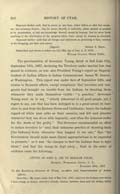
[p. 812]
Deponent further saith that he never, at any time, either before or after that massacre, was accessory thereto; that he never, directly or indirectly, aided, abetted or assisted in its perpetration, or had any knowledge thereof, except by hearsay; that he never knew anything of the distribution of the property taken there, except by hearsay as aforesaid. Deponent further saith that all charges and statements as pertaining to him, contrary to the foregoing, are false and untrue.
(Signed), GEORGE A. SMITH.
Subscribed and sworn to before me this 30th day of July, A. D. 1875.
WILLIAM CLAYTON, Notary Public.
The proclamation of Governor Young, dated at Salt Lake City, September 15th, 1857, declaring the Territory under martial law, was placed in evidence, as was also President Young's report as Superintendent of Indian Affairs to Indian Commissioner James W. Denver, at Washington. This report was under date of September 12th, and relates to financial affairs, except complaints that travelers and emigrants had brought on trouble from the Indians by shooting them whenever they made themselves visible: "a practice," Governor Young went on to say, "utterly abhorrent to all good people, yet, I regret to say, one that has been indulged in to a great extent by travelers to and from the Eastern States and California; hence the Indians regard all white men alike as their enemies, and kill and plunder whenever they can do so with impunity; and often the innocent suffer for the deeds of the guilty." The Governor recommended an effort to induce travelers to "omit their infamous practice of shooting them [the Indians] down whenever they happen to see one;" that "the Government should make more liberal appropriations to be expended in presents," as it was "far cheaper to feed the Indians than to fight them;" and that the troops be kept away. Next in the order of evidence came the following:
LETTER OF JOHN D. LEE TO BRIGHAM YOUNG.
HARMONY, WASHINGTON COUNTY, U. T.,
November 20th, 1857.
To His Excellency Governor B. Young, ex-officio and Superintendent of Indian Affairs,
DEAR SIR:—My report under date of May llth, 1857, relative to the Indians over whom I have charge as farmer, showed a friendly relation between them and the whites, which
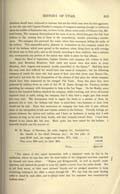
[p. 813]
doubtless would have continued to increase had not the white man been the first aggressor, as was the case with Captain Fancher's company of emigrants passing through to California about the middle of September last, on Corn Creek, fifteen miles south of Fillmore City, Millard County. The company there poisoned the meat of an ox, which they gave the Pah Vant Indians to eat, causing four of them to die immediately, besides poisoning a number more. The company also poisoned the water where they encamped, killing the cattle of the settlers. This unguarded policy, planned in wickedness by this company, raised the ire of the Indians, which soon spread to the southern tribes, firing them up with revenge till blood was in their path; and as the breach, according to their tradition, was a national one, consequently any portion of the nation was liable to alone for that offense.
About the 22nd of September, Captain Fancher and company fell victims to their wrath, near Mountain Meadows; their cattle and horses were shot down in every direction, their wagons and property mostly committed to the flames.* Had they been the only ones that suffered we would have less cause of complaint; but the following company of nearly the same size had many of their men shot down near Beaver City, and had it not been for the interposition of the citizens of that place the whole company would have been massacred by the enraged Pah Vants. From this place they were protected by military force, by order of Col. W. H. Dame, through the Territory, besides providing the company with interpreters to help to the Los Vegas. On the Muddy, some three to five hundred Indians attacked the company, while traveling, and drove off several hundred head of cattle, telling the company that if they fired a single gun they would kill every soul. The interpreters tried to regain the stock, or a portion of them, by presents, but in vain; the Indians told them to mind their own business, or their lives would not be safe. Since that occurrence no company has been able to pass without some of our interpreters to talk and explain matters to the Indians. Friendly feelings yet remain between the natives and settlers, and I have no hesitancy in saying that it will increase so long as we treat them kindly, and deal honestly toward them. I have been blessed in my labors the last year. Much grain has been raised for the Indians. I herewith furnish you the account of:
W. H. Dame, of Parowan, for cattle, wagons, etc., furnished for the benefit of the Chief Owanup (ss.); for two yoke of oxen $100 each, one wagon and chains, $75, total,. . . . . . . . $275.00
Two cows, $30 each, for labor $80,. . . . . . . . . . 140.00
TOTAL, . . . . . . . . . . $415.00
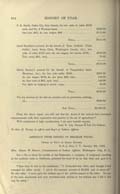
[p. 814]
P. K. Smith, Cedar City, Iron County, for two yoke of cattle, $100
each, and No. 2 Weekses band, 8200.00
One cow, $35, do. one wagon, $80 ., $115.00
TOTAL, *$315.00
Jacob Hamblin's account, for the benefit of Talse Gobbeth (Tutse Gabits) band, Santa Clara, Washington County, (ss.), two
yoke of cattle, $100 each, do. one wagon, two chains, $100,. . $300.00
Two cows, $35, total, 70.00
TOTAL, $370.00
Henry Barney's account for the benefit of Tenquitches' band,
Harmony, (ss.), for two yoke cattle, $100 $200.00
do. one wagon, $100, do. one plow, $40, total, 140.00
do. four cows at $35, each, total, 140.00
For labor in helping to secure crops, 40.00
TOTAL $520.00
For my services for the last six months and lor provisions, clothing,
etc., $600.00
SUM TOTAL, $2,220.00
From the above report you will see that the wants of the natives have increased commensurate with their experience and practice in the art of agriculture.*
With sentiments of high consideration, I am your humble servant,
JOHN D. LEE, Farmer to Pah Ute Indians.
To Gov. B. Young, ex-ojficio and Sup't of Indian Affairs.
ABSTRACT FROM REPORT OF BRIGHAM YOUNG.
OFFICE OF SUP'T OF INDIAN AFFAIRS,
G. S. L. CITY, U. T., January 6th, 1858.
Hon. James W. Denver, Commissioner of Indian Affairs, Washington City, D. C.,
SIR:—On or about the middle of last September, a company of emigrants, traveling by the southern route to California, poisoned the meat of an ox that died, and gave it to
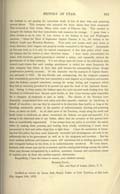
[p. 815]
the Indians to eat, causing the immediate death of four of their tribe, and poisoning several others. This company also poisoned the water where they were encamped. This occurred at Corn Creek, fifteen miles south of Fillmore City. This conduct so enraged the Indians that they immediately took measures for revenge. I quote from a letter written to me by John D. Lee, farmer to the Indians in Iron and Washington counties: "About the 22nd of September Captain Fancher & Co., fell victims to the Indians' wrath near Mountain Meadows. Their cattle and horses were shot down in every direction, their wagons and property mostly committed to the flames." Lamentable as this case truly is, it is only the natural consequence of that fatal policy which treats the Indians like the wolves or other ferocious beasts. I have vainly remonstrated for years, with travelers, against pursuing so suicidal a policy, and repeatedly advised the government of its fatal tendency. It is not always upon the heads of the individuals who commit such crimes that such condign punishment is visited, but more frequently the next company that follow in their fatal path become the unsuspecting victims, though preadventure perfectly innocent. Of this character was the massacre of Captain Gunnison and party in 1853. He was friendly and unsuspecting, but the emigrant company that immediately preceeded him had committed a most flagrant act of injustice and murder upon the Indians, escaped unscathed, causing the savage feeling and vengeance which they had so wantonly provoked to be poured out upon the head of the lamented Gunnison. Owing to these causes, the Indians upon the main traveled roads leading from this Territory to California have become quite hostile, so that it has become quite impossible for a company of emigrants to pass in safety. The citizens of the Territory have frequently compromised their own safety and other peaceful relations, by interfering in behalf of travelers; nor can they be expected to be otherwise than hostile, so long as the traveling community persist in the practice of indiscriminately shooting and poisoning them, as above set forth. In all other parts of the Territory, except along the north and south routes to California, as above mentioned, the Indians are quiet and peaceful; it is owing to the disturbed state of our Indian affairs that the accounts of this quarter have been so considerably augumented. It has always been my policy to conciliate the native tribes by making them presents, and treating them kindly, considering it much more economical to feed and clothe them than to fight them. I have the satisfaction of knowing that this policy has been most eminently successful and advantageous, not only to the settlements but to the government as well as to the emigrants and travelers. But the most uniform judicious and humane course will sometimes fail in holding ignorant, wild and revengeful Indians by the wrist, to be indiscriminately murdered. We trust, henceforward, such scenes may not be re-enacted, and the existing bad feelings among the native tribes may become extinguished by a uniform, consistent, humane and conciliatory course of superior acts, by those who profess superior attainments.
Respectfully, I have the honor to remain, your obedient servant,
BRIGHAM YOUNG,
Gov. and Sup't of Indian Affairs, U. T.
Certified as correct by James Jack, Notary Public of Utah Territory, at Salt Lake City, August 15th, 1876.

[p. 816]
CIRCULAR BY BRIGHAM YOUNG AND DANIEL H. WELLS.
GREAT SALT LAKE CITY, September 14th, 1857.
Colonel Win. H. Dame, Parowan, Iron County:
Herewith you will receive the Governor's proclamation declaring martial law.
You will probably not be called out this fall but are requested to continue to make ready for a big fight another year. The plan of operations is supposed to be about this: In case the United States government should send out an overpowering force, we intend to desolate the Territory, and conceal our families, stock, and all of our effects in the fastnesses of the mountains, where they will be safe, while the men waylay our enemies, attack them from ambush, stampede their animals, take their supply trains, cut off detachments, and parlies sent to the canyons for wood, or on other service, to lay waste everything that will burn houses, fences, trees, fields and grass so that they cannot find a particle of anything that will be of use to them, not even sticks to make a fire to cook their supplies. To waste our enemies and lose none, that will be our mode of warfare. Thus you see the necessity of preparing. First secure places in the mountains where they cannot find us, or if they do where they cannot approach in force, and then prepare for our families, building some cabins, caching flour and grain. Flour should be ground in the latter part of the winter, or early in the spring, to keep. Sow grain in your fields as early as possible this fall, so the harvest of another year may come off before they have time to get here. Conciliate the Indians and make them our fast friends.
In regard to letting the people pass or repass, or travel through this Territory, this applies to all strangers and suspected persons. Yourself and Brother Isaac C. Haight, in your district, are authorized to give such permits; examine all such persons before giving to them permits to pass. Keep things perfectly quiet, and let all things be done peacefully, but with firmness, and let there be no excitement. Let the people be united in their feelings and faith, as well as works, and keep alive the spirit of the reformation; and what we said in regard to saving the grain and provisions we say again. Let there be no waste. Save life always when it is possible. We do not wish to shed a drop of blood if it can be avoided. This course will give us great influence abroad.
[Signed], BRIGHAM YOUNG,
DANIEL H. WELLS.*
Certified to under seal by James Jack, Notary Public, August 16th, 1876.
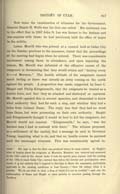
[p. 817]
Now came the examination of witnesses for the Government. General Daniel H. Wells was the first one called. His testimony was to the effect that in 1857 John D. Lee was farmer to the Indians and was popular with them; he had previously held the office of major in the militia.
Laban Morrill who was present at a council held at Cedar City on the Sunday previous to the massacre, stated that the proceedings of the meeting had begun when he entered. There was considerable excitement among those in attendance, and upon inquiring the reason, Mr. Morrill was informed of the offensive course of the emigrants in threatening that they would return and "destroy every d—d Mormon." The hostile attitude of the emigrants caused much feeling as there was already an army coming on the north against the people. A proposition was made, supported by Isaac C. Haight and Philip Klingensmith, that the emigrants be treated as a hostile force, arid that they be attacked and destroyed or captured. Mr. Morrill opposed this in several speeches, and demanded to know what authority they had for such a step, and whether they had a letter from Colonel Dame. The reply was that they had no word from Dame, but were proceeding on their own authority. Haight and Klingensmith thought it would be best to kill the emigrants, but Morrill would not consent. "Klingensmith," he says, "was the hardest man I had to contend with there." The witness proposed, as a settlement of the matter, that a message be sent to Governor Young, inquiring what to do, and that no hostile course be pursued until the messenger returned. This was unanimously agreed to.
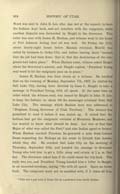
[p. 818]
Word was sent to John D. Lee, who was not at the council, to have the Indians kept back, and not interfere with the emigrants, while another dispatch was forwarded by Haight to the Governor. This letter was sent with James H. Haslam, and witness went to his home at Fort Johnson feeling that all was well. On Friday, the llth, about fourty-eight hours before Haslam returned, Morrill was called by business to Cedar City, and before leaving there "learnt that the job had been done; that is, that the destruction of the emigrants had taken place." When Haslam came, witness asked Haight about the Governor's answer, and Haight replied. "President Young sent word to let the emigrants pass on in peace."
James H. Haslam was then sworn as a witness. He testified that on the evening of Monday, September 7th, 1857, he started for Salt Lake City, having been directed by Isaac C. Haight to take a message to President Young, with all speed. At the same time an order which the witness read, was issued by Haight to John D. Lee, to keep the Indians in check till the messenger returned from Salt Lake City. The message which Haslam bore was addressed to "Brigham Young, Governor of Utah Territory." The witness was permitted to read it before it was sealed up. It stated that the Indians had got the emigrants corraled at Mountain Meadows, and Lee wanted to know what should be done. Lee was at that time Major of what was called the Post,* and also Indian agent or farmer. When Haslam reached Parowan he procured a note from Colonel Dame requesting the Bishops on his route to furnish him horses, which they did. He reached Salt Lake City on the morning of Thursday, September 10th, and handed the message to Governor Young who told him to get a little sleep and return at 1 p. m. that day. The Governor asked him if he could stand the trip back. The reply was yes, and President Young handed him a letter to Haight, in an unsealed envelope, saying, "Go with all speed. Spare no horse flesh. The emigrants must not be meddled with, if it takes all Iron

[p. 819]
County to prevent it. They must go free and unmolested."* Haslam hastened back to Cedar City, arriving there on Sunday morning, September 13th. He met Haight in the street and handed him the letter. When he read it Haight exclaimed, "Too late! Too late!" and cried like a child. That was the first that witness knew of the massacre. On his way to Salt Lake he had found the Indians very mad, and they told him they would kill the emigrants before he got back.
The testimony of Joel W. White did not differ from that given by him at the former trial. He was followed by Samuel Knight and Samuel McMurdy, who drove the teams in which the wounded emigrants, children and guns were placed after tbe company surrendered. Knight and McMurdy acted under the direction of Lee and Klingensmith. McMurdy was on the first wagon and Knight on the second, with Lee walking between. Knight testified that when the halt was made and the Indians rushed on to the train, he saw Lee club a woman to death. McMurdy said that he saw Lee, at the moment of attack, in the act of shooting a woman; also saw him shoot with his pistol two or three of the wounded who were in the wagon.† The Indians, who came out of ambush, did the principal part of the killing. Both witnesses, when they were first called out, understood that it was to rescue the emigrants from the Indians.
Nephi Johnson testified that he was present at the Meadows, where "Klingensmith and John D. Lee seemed to be engineering the whole thing." At the time of the killing, witness was after his horse about three hundred yards up the hill. He saw Lee fire, and a woman fall. The Indians rushed in and Lee helped them to pull the wounded out of the wagons. Before the shooting, Lee had told the militia that the emigrants were to be killed and a good many
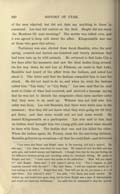
[p. 820]
of the men objected, but did not dare say anything to those in command. Lee had full control on the field. Haight did not reach the Meadows till next morning.* The matter was talked over, and it was agreed to keep still about the affair. Klingensmith was one of those who gave this advice.
Testimony was also elicited from Jacob Hamblin, who, the next spring, counted and buried one hundred and twenty skeletons that had been torn up by wild animals. He returned to Salt Lake City a few days after the massacre, and saw the dead bodies lying around. On his way down he met Lee at Fillmore, en route to Salt Lake. Hamblin had heard of the affair from the Indians, and asked Lee about it. The latter said that the Indians compelled him to lead the attack. He did not want to do so, and when he cried, the Indians called him "Yah Guts," or "Cry Baby." Lee also said that he sent word to Cedar of what had occurred, and received a message saying that he was not to disturb the emigrants—then came another order that they were to be used up. Witness was not told who this order was from. Lee told Hamblin that there were white men in the massacre; that they did not know what they were going for till they got there; and that some would not act and some would. He named Klingensmith as a participator. Lee also said to him that an Indian chief brought him two young girls and asked what should be done with them. The Indian shot one and Lee killed the other. When the Indian agent, Dr. Forney, came for the surviving children, Hamblin gathered up seventeen—all that he could find—and delivered
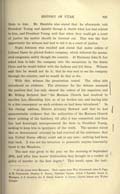
[p. 821]
them to him. Mr. Hamblin also stated that he afterwards told President Young and Apostle George A. Smith what Lee had related to him, and President Young said that when they could get a court of justice the matter should be ferreted out. This was the first opportunity the witness had had to tell it in a court of justice.
Nephi Johnson was recalled and stated that under orders of Colonel Dame he piloted Duke's company, which followed the massacred emigrants, safely though the country. At Harmony John D. Lee asked him to take the company into the mountains in the Santa Clara and he would follow with the Indians and kill them. Witness said that he would not do it; that he was sent to see the company through the country, and he would do that or die.
With this witness the prosecution rested. The other side introduced no evidence. The attorneys for the defense assumed the position that Lee only obeyed the orders of his superiors, and Mr. Bishop declared that "the Mormon Church had resolved to sacrifice Lee, discarding him as of no further use, and leaving him to a fate consequent on such evidence as had been introduced." In his closing address, District Attorney Howard said that he had unanswerable evidence that the authorities of the Mormon Church knew nothing of the butchery till after it was committed, and then Lee had knowingly misrepresented the facts to President Young, seeking to keep him in ignorance of the truth. The speaker stated that as Government attorney he had received all the assistance that any United States official could ask in any case; nothing had been kept back. It was not his intention to prosecute anyone innocently lured to the Meadows.
The case was given to the jury on the morning of September 20th, and after four hours' deliberation they brought in a verdict of guilty of murder in the first degree.* This result, upon the testi-
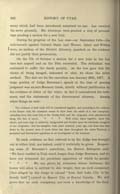
[p. 822]
mony which had been introduced, surprised no one. Lee received the news gloomily. His attorneys were granted a stay of proceedings pending a motion for a new trial.
During the progress of the Lee case—on September 14th—the indictments against Colonel Dame and Messrs. Adair and Wilden I were, on motion of the District Attorney, quashed, as the evidence did not justify their prosecution.
On the 7th of October a motion for a new trial in the Lee case was argued and on the 10th overruled. The defendant was sentenced to suffer the death penalty. As the law gave him the choice of being hanged, beheaded or shot, he chose the latter method. The date set for the execution was January 26th, 1877. A large portion of Judge Boreman's speech at the time of passing judgment was an anti-Mormon tirade, utterly without justification by the evidence at either of the trials; in fact it contradicted the testimony and the statements of the Government attorney. Among other things he said:
The evidence of both trials will be considered together, and according to the evidence at the former trial, the massacre seems to have been the result of a vast conspiracy, extending from Salt Lake City to the bloody field, and the emigrants were plundered all along this line of travel. * * * Both trials, taken together, show that others, and some high in authority, inaugurated and decided upon the wholesale slaughter of the emigrants; that the slaughter took place nineteen years ago, and from that time down to the present term of court, there has been throughout the entire Territory, a persistent and determined opposition to an investigation of the massacre.
No such evidence as that referred to by the Judge was brought out at either trial, nor indeed, could it truthfully be given. Respecting some of Boreman's assertions, the Beaver Enterprise said: "We have resided in Utah much longer than Judge Boreman, and we have not witnessed the persistent opposition of which he speaks. * * We can prove, by witnesses whose testimony his honor will allow is entitled to due weight, that no such conspiracy [that alleged by the Judge to extend "from Salt Lake City to the bloody field"] existed in Beaver City or Beaver County. We will prove that no such conspiracy, nor even a knowledge of the deed,
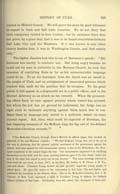
[p. 823]
existed in Millard County. We will prove the same by good witnesses in regard to Juab and Salt Lake Counties. We do not deny that such conspiracy existed in Iron County; but its existence there does not prove, by a great deal, that it was to be found everywhere between Salt Lake City and the Meadows. If it was known in any other county besides Iron, it was in Washington County, and that county only."
The Ogden Junction had this to say of Boreman's speech: "His business was merely to sentence Lee. But being angry because he could not try men in authority in the Mormon Church, he took this occasion of convicting them as far as his unwarrantable language could do so. To us his harangue from the bench was an insult to the people of Utah, and an arraignment of unaccused persons which renders him unfit for the position that he occupies. To the great public it will appear as a disgraceful act in a public officer, and to the District Attorney as an attack on his veracity. When the prosecuting officer finds no case against persons whom rumor has accused, but whom the law has no ground for indictment, the Judge has no right even to insinuate anything against them, much less to condemn them in language only suited to a pothouse debate on some current report. But, then, what could be expected of Boreman, the last lingering remnant of the McKean ring, the fag end of the defunct Methodist-Christian crusade."*
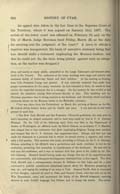
[p. 824]
An appeal [was taken in the Lee Case to the Supreme Court of the Territory, where it was argued on January 31st, 1877. The action of the lower court was affirmed on February 10, and on the 7th of March Judge Boreman fixed Friday, March 23, as the date for carrying lout the judgment of the court.* A move to obtain a reprieve was inaugurated, the basis of executive clemency being that Lee should make a statement implicating the Mormon leaders; but this he could not do, the facts being plainly against such an allegation, so the matter was dropped.†
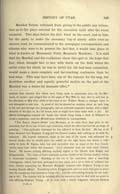
[p. 825]
Marshal Nelson refrained from giving to the public any intimation as to the place selected for the execution until after the event occurred. Two days before the date fixed by the court, and in time for the party to make the necessary trip of ninety miles over an uneven road, he communicated to the newspaper correspondents and citizens who were to be present the fact that it would take place at what is known as Monument Point, Mountain Meadows. It is said that the Marshal and his coadjutors chose this spot in the hope that Lee, when brought face to face with death on the field where the awful crime for which he was to forfeit his life had been committed, would make a more complete and far-reaching confession than he had done. This may have been one of the reasons for the step, but doubtless another and equally powerful motive on the part of the Marshal was a desire for dramatic effect.*
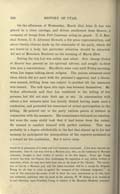
[p. 826]
On the afternoon of Wednesday, March 21st, John D. Lee was placed in a close carriage, and driven southward from Beaver, a company of troops from Fort Cameron acting as guard. U. S. Marshal Nelson, U. S. Attorney Howard, a few press representatives, and about twenty citizens made up the remainder of the party, which did not travel in a body lest particular attention should be attracted. All met at Mountain Meadows on the morning of March 23rd.
During the trip Lee was sullen and silent. Rev. George Stokes of Beaver was present as his spiritual adviser, and sought to. draw him into a conversation. His efforts were vain until Friday morning, when Lee began talking about religion. The parson advanced some ideas which did not meet with the prisoner's approval, and a discussion ensued, drifting from one subject to another till the massacre was named. The talk upon this topic was between themselves. Mr. Stokes afterwards said that Lee confessed to the killing of live persons, but did not state their age or sex. In conversation with others a few minutes later Lee stoutly denied having made such a confession, and protested his innocence of actual participation in the killing. He pointed out to the party various points of interest in connection with the massacre. His countenance betrayed no emotion, but wore the same stolid look that it had borne from the outset. He seemed to conduct himself with perfect coolness. This was probably in a degree attributable to the fact that almost up to his last moment he anticipated the interposition of the reprieve promised as a reward for his confession. But it never came.
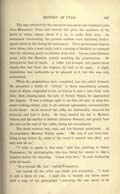
[p. 827]
The spot selected for the execution was about one hundred yards from Monument Point, and toward this place the members of the party in camp, began, about 9 a. m., to make their way. On eminences overlooking the ground soldiers were stationed, while a squad stood in line facing the monument. Three government wagons were drawn into a semi-circle, and a covering of blankets so arranged that the shooting party was hidden from view. Lee sat some distance away, with the Marshal, quietly watching the preparations. He betrayed no fear of death. A coffin was brought and placed about twenty-five feet from the wagons, for him to sit upon. A slight trepidation was noticeable as he glanced at it, but this was only momentary.
When the preparations were completed, Lee was called forward. He presented a bottle of "bitters" to those immediately around, some of whom responded to his invitation to take a last drink with him; then, leaning upon the arm of Parson Stokes, he approached the wagons. It was a strange sight to see this old man of sixty-five years walking calmly, and, to all outward appearance, unconcernedly to his doom. As he reached the coffin, he deliberately removed his overcoat and laid it down. He then handed his hat to Marshal Nelson and his muffler to District Attorney Howard, and quietly took his seat on the end of the coffin, facing his executioners.
The death warrant was read, and Lee listened attentively. At its conclusion Marshal Nelson spoke: "Mr. Lee, if you have anything to say before the order of the court is carried into effect, you may now do so."
"I wish to speak to that man," said Lee, pointing to James Fennamore, the photographer, who was fixing his camera to take a negative before the shooting. "Come over here," he said, beckoning with his hand.
"In a second, Mr. Lee," replied Fennamore.
Lee waited till the artist was ready, and proceeded: "I want to ask a favor of you. I want you to furnish my three wives each a copy of my photograph" meaning the one about to be
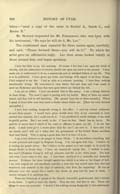
[p. 828]
taken "send a copy of the same to Rachel A., Sarah C., and Emma B."
Mr. Howard responded for Mr. Fennamore, who was busy with his instrument, "He says he will do it, Mr. Lee."
The condemned man repeated the three names again, carefully, and said, "Please forward them you will doit?" To which the artist gave an affirmative reply. Lee then arose, looked calmly at those around him, and began speaking:
I have but little to say this morning. Of course I feel that I am upon the brink of eternity, and the solemnities of eternity should rest upon my mind at the present. I have made out, or endeavored to do so, a manuscript and an abridged history of my life. This is to be published. I have given my views and feelings with regard to all those things. I feel resigned to my fate. I feel as calm as a summer morning. I have done nothing intentionally wrong. My conscience is clear before God and man, and I am ready to meet my Redeemer and those that have gone before me behind the veil.
I am not an infidel. I have not denied God or His mercy. I am a strong believer in those things. The most I regret is parting with my family. Many of them are unprotected, and they will be left fatherless. [He paused here two or three seconds.] When I speak of those little ones they touch a tender chord within me. [Here his voice faltered perceptibly.]
I have done nothing designedly wrong in this affair. I used my utmost endeavors to save these people. I would have given worlds were they at my command, to have averted that calamity, but I could not do it. I am sacrificed to satisfy feelings I am used to gratify parties. But I am ready to die. I have no fear. Death has no terror. No particle of mercy have I asked of the court or officials, to spare my life. I do not fear death. I shall never go to a worse place than the one I am now in. I have said it to ray family, and I will say it today, that the government of the United States sacrifices their best friend. That is saying a great deal, but it is true it is so.
I am a true believer in the gospel of Jesus Christ. I do not believe everything that is now practiced and taught by Brigham Young. I do not agree with him. I believe he is leading the people astray. But I believe in the gospel as it was taught in its purity by Joseph Smith, in former days. I have nay reasons for saying this. I studied to make this man's [Brigham Young's] will my pleasure, and did so for thirty years. See how and what I have come to this day. I have been sacrificed in a cowardly and dastardly manner. Evidence has been brought against "me which is as false as the hinges of hell. I am now singled out and sacrificed sacrifice a man that has waited upon him, that has wandered and endured in the days of adversity, true from the beginning! He has an influence over the people like a reptile, that draws its prey into the jaws of death. I cannot compare it to anything else.
There are thousands of people in the Church, honorable, good-hearted, that I cherish in my heart. I regret to leave my family. They are near and dear to me. These are things to rouse my sympathy. I declare I did nothing wrong designedly in this unfortunate
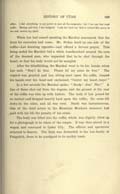
[p. 829]
affair. I did everything in my power to save all the emigrants; but I am one that must suffer. Having said this, I feel resigned. I ask the Lord my God to extend His mercy to me and receive my spirit.
When Lee had ceased speaking the Marshal announced that the hour for execution had come. Mr. Stokes knelt on one side of the coffin Lee kneeling opposite and offered a fervent prayer. This being ended the Marshal tied a white handkerchief around the eyes of the doomed man, who requested that he be shot through the heart, so that his body would not be mangled.
After the blindfolding, the Marshal went to tie his hands, when Lee said, "Don't do that. Please let my arms be free." The request was granted, and Lee, sitting erect upon the coffin, clasped his hands over his head and exclaimed, "Center my heart, boys!"
In a few seconds the Marshal spoke: "Ready! Aim! Fire!'" A line of flame shot out from the wagons, and the ground at the rear of the coffin was torn up with bullets. The body of Lee poised for an instant and dropped heavily back upon the coffin; the arms fell down by the sides, and all was over. Death was instantaneous. One of the chief actors in the Mountain Meadows massacre had paid with his life the penalty of his crime.
The body was lifted into the coffin, which was slightly tilted up for a photograph to be taken of the corpse. It was then placed in a wagon and conveyed to Cedar City. The officers and spectators returned to Beaver. The body was forwarded to the Lee family at Panguitch, there to be consigned to its earthly tomb.